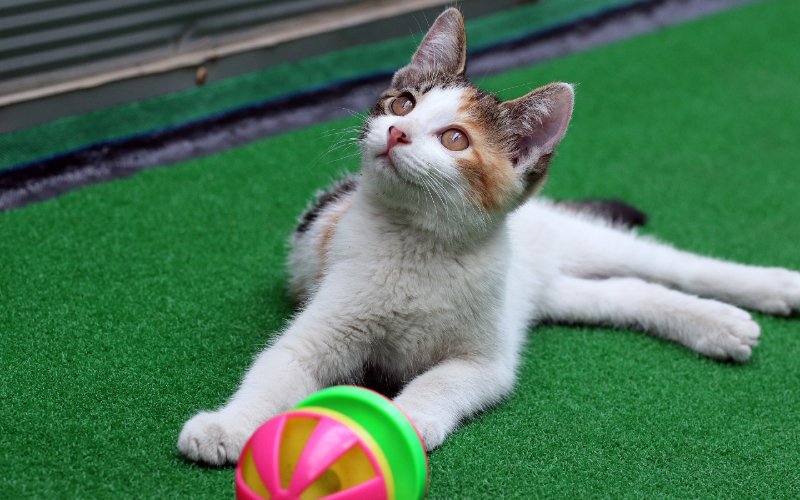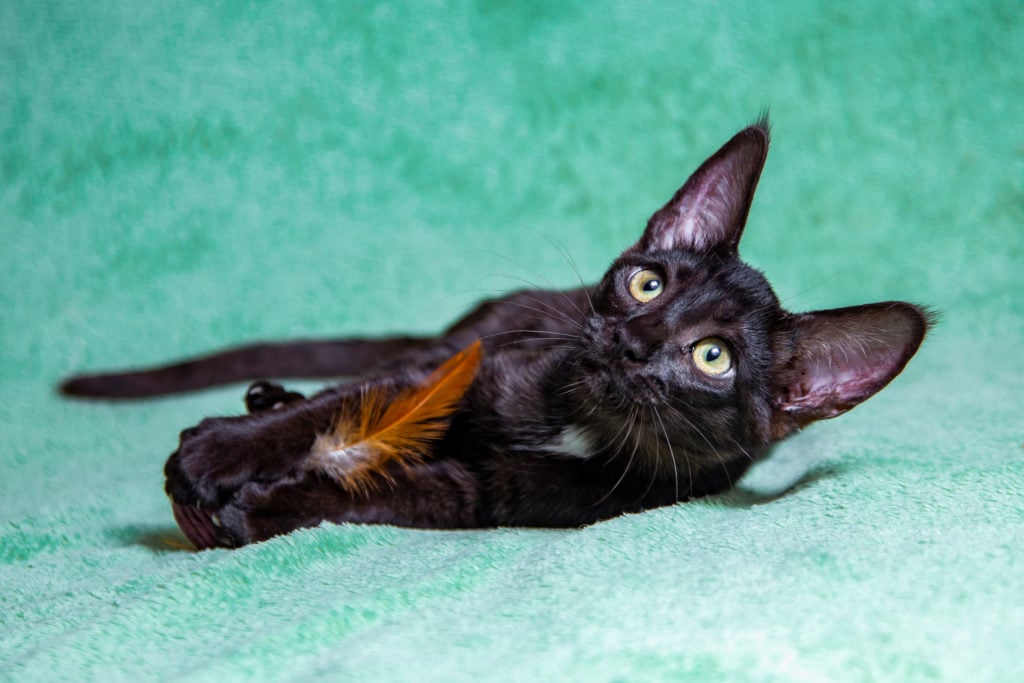Why Do Cats Sit on Their Toys? 10 Possible Reasons

Updated on

Cats have a tendency to exhibit a wide array of intriguing behaviors that often leave their human companions pondering their motives. Among these behaviors is the habit of sitting on their toys.
While it might seem like a perplexing choice, there are various reasons behind this whimsical feline inclination. From marking territory and seeking comfort to mimicking hunting instincts and simply indulging in moments of playful antics, the act of a cat perching atop their toys is a behavior that invites exploration into the world of feline psychology.
The Territorial and Hunting Nature of Cats
Cats, as creatures deeply rooted in their ancestral instincts, have inherited behaviors that reflect their evolutionary heritage.
On one hand, their territorial instincts are pronounced; they view their environment as a kingdom to be defended, and they use scent marking and territorial displays, such as sitting on objects, as a means of ownership and deterring potential intruders.
On the other hand, their predatory nature is equally in play; cats are born hunters, equipped with an innate drive to stalk and capture prey. This predatory instinct drives their play behaviors, whether it’s pouncing on toys or stalking imaginary prey, allowing them to hone their hunting skills while also providing them with physical and mental stimulation.
These intertwined territorial and predatory instincts are fundamental aspects of a cat’s nature, shaping their behavior and adding to the charm of these furry feline companions.

Is It Normal for Cats to Sit on Their Toys?
Yes, it is entirely normal for cats to sit on their toys. Cats are known for their unique and sometimes quirky behaviors, and sitting on their toys is just one of the many ways they interact with their environment. It’s essential to recognize that what is considered normal for a cat can vary from one individual to another, and these behaviors are often a part of their instincts and playful disposition.
Observing and understanding these actions can help strengthen the bond between cat owners and their feline companions, allowing for a deeper appreciation of their complex and fascinating nature.
The 10 Reasons Why Cats Sit on Their Toys
1. Ownership
Cats sitting on their toys can be seen as a manifestation of their instinctual drive for ownership and territorial control. By physically occupying their toys, cats are essentially marking them with their scent and presence, signifying possession.
This behavior is reminiscent of their wild ancestors’ territorial behaviors, where they would scent-mark areas to claim them as their own. In the domestic setting, it can also be a way for cats to establish dominance over their possessions, conveying their status within the household.
2. Comfort

The comfort aspect of cats sitting on their toys is linked to their preference for cozy and soft spots. Cats have a penchant for seeking out comfortable places to rest, and some toys, especially plush ones, offer a soft and comforting surface.
Sitting on these toys can provide a sense of physical comfort and relaxation, similar to how humans might cozy up with a favorite blanket or pillow for warmth and relaxation. It’s a way for cats to create a secure and soothing environment within their surroundings.
3. Warmth
Cats are known for their love of warmth, and they are often drawn to sunny spots or heated areas. When a toy has been in a warm location, such as in a sunny patch of the room or near a heat source, cats may sit on it to absorb the residual warmth. This behavior allows them to enjoy the comforting sensation of a warm spot, which can be especially appealing in cooler climates or during colder seasons.
4. Security

Sitting on a toy can offer cats a sense of security, particularly in unfamiliar or stressful situations. The toy carries their scent, which is familiar and reassuring to them. This scent-marked item can act as a comforting presence, helping to reduce anxiety and provide a haven, much like a security blanket does for some humans. In this way, sitting on their toys becomes a way for cats to self-soothe and find solace in their environment.
5. Playtime Pause
Cats often engage in bursts of play and activity followed by periods of rest. Sitting on a toy during playtime can serve as a brief intermission, allowing them to conserve energy and recharge before resuming play. This behavior demonstrates their ability to regulate their activity levels and highlights the importance of taking breaks for relaxation and recuperation. It’s their way of saying “I’m tired, but I’m not done playing yet!”
6. Observation

Cats are natural observers, and they are known for their keen interest in their surroundings. Sitting on a toy may give them an elevated vantage point from which to watch and monitor their environment. This behavior allows them to keep a watchful eye on potential prey, other animals, or any interesting activity, contributing to their innate curiosity and hunting instincts.
7. Hunting Practice
Cats are born hunters, and even in play, they often engage in behaviors that mimic hunting. Sitting on a toy can simulate the act of pouncing and pinning down prey, allowing them to sharpen their hunting skills. This practice is not only a form of physical exercise but also a way for cats to mentally stimulate themselves and satisfy their predatory instincts.
8. Self-Soothing

Just as humans might engage in soothing behaviors when stressed or anxious, cats have coping mechanisms, too. Sitting on a familiar toy can be a way for them to self-soothe and find comfort when facing challenging emotions or situations. The scent and texture of the toy provide reassurance and are a source of emotional support, helping them manage stress or anxiety more effectively.
9. Territorial Behavior
Cats are inherently territorial animals, and they use various means to mark and defend their territory. Sitting on a toy can be a territorial display, signaling to other cats that the area and its contents are claimed. This behavior is part of their natural drive to establish boundaries and maintain control over their space.
10. Exploration

Cats explore their environment through tactile and interactive behaviors. Sitting on a toy can be a way for them to engage with and explore an object in their surroundings. It allows them to interact with the toy physically, satisfying their curiosity and helping them learn more about their environment.
Our Favorite Cat Toys Here are a few of our favorite cat toys, each caters to various types of play your cat might like the best.
Hepper Catnip Stick
Hepper Whale Plush
Hepper Furball Set
Contains Catnip
Safe for KIttens
Self-play
All-Natural
Washable
Conclusion
From asserting ownership and seeking comfort to harnessing warmth and security, these behaviors reflect the multifaceted nature of our feline companions. Understanding these varied motivations behind this seemingly simple act not only deepens our appreciation for the enigmatic world of cats but also fosters a stronger bond between humans and their beloved feline friends!
Featured Image Credit: evrymmnt, Shutterstock














